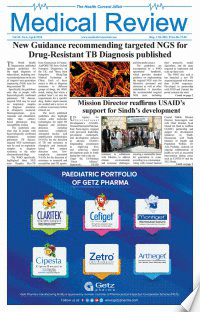The Food and Agriculture Organization (FAO) in close collaboration with the IPC Technical Working Group, UNICEF/Nutrition Working Group, as well as relevant government organizations organized the IPC Acute Malnutrition Training and Analysis Workshop for Drought Affected Areas of Sindh and Balochistan that took place in Karachi from 20 – 26 May 2019.
Pakistan faces the challenge of poverty, food insecurity, high acute malnutrition, and regular occurrence of natural disasters such as droughts and floods. Most areas of the Sindh and Balochistan provinces are arid, and evidence in the past two decades shows that the incidence of drought is becoming increasingly frequent in Balochistan and Sindh, with substantial consequence upon food security, health, and nutrition in particular of rural population.
Currently, the percentage of acute malnourished (Wasted) children under the age of five in Pakistan is 17.7 percent, with 23.3 percent in Sindh and 18.9 percent in Balochistan. The number of underweight1 children in Sindh is 41.3 percent, and in Balochistan 31.0 percent. Overall, prevalence of undernourishment at the national level2 is 20.5 percent; with 22 percent of the population in Sindh, and 40 percent of the population in Balochistan being undernourished3.
The recent Balochistan Drought Needs Assessment conducted in 14 drought affected districts in Balochistan in January 2019 reveals that overall, 74 percent of the surveyed households are moderately or severely food insecure, whereas 22 percent are severely food insecure. The findings of Sindh Drought Needs Assessment (SDNA) conducted in eight drought affected districts in October 2018 shows that overall, 71 percent of the surveyed households are moderately or severely food insecure, whereas 32 percent are severely food insecure. FAOR Pakistan said it is important, considering the increased frequency of droughts and flash floods, to understand how severe the situation is, and to provide decision makers with a rigorous analysis identifying how many people are most food unsecure and where.
The Integrated Food Security Phase Classification (IPC) is used for classifying the severity and magnitude of food insecurity. The IPC Acute tool is valued for its role in pulling together relevant data and assessments on food security through a collective analytical process with clearly articulated and accessible results.
FAO collaborated with the Ministry of National Health Services, Regulation and Coordination, Ministry of National Food Security and Research, Provincial Disaster Management Authority, Provincial Health and Planning Departments, Provincial Bureaus of Statistics, UN agencies and international and local NGO’s for the event, which were also a part of the analysis workshop. Nutritionists carried out the analysis, and food security, health, as well as WASH experts were included to provide inputs to ensure these sectors are also taken into account.
The IPC AMN analysis workshop was organized for the 14 drought affected districts of Balochistan, namely, Pishin, Killa Abdullah, Chaghi, Kacchi, Loralai, Washuk, Panjgur, Kech, Gwadar, Dera Bugti, Awaran, Nushki, Jhal Magsi and Kharan, and 7 drought affected districts of Sindh , namely, Tharparkar, Umerkot, Sanghar, Jamshoro, Dadu, Badin and Qambar Shahdadkot.The analysis for both current and projection periods was conducted.
The training and analysis workshop enhanced the technical capacity of government officials and other participants. The IPC team based in Pakistan, led by FAO will provide support to finalize the write up on IPC Acute Malnutrition analysis for the above mentioned drought affected districts and report will be disseminated in July 2019.


